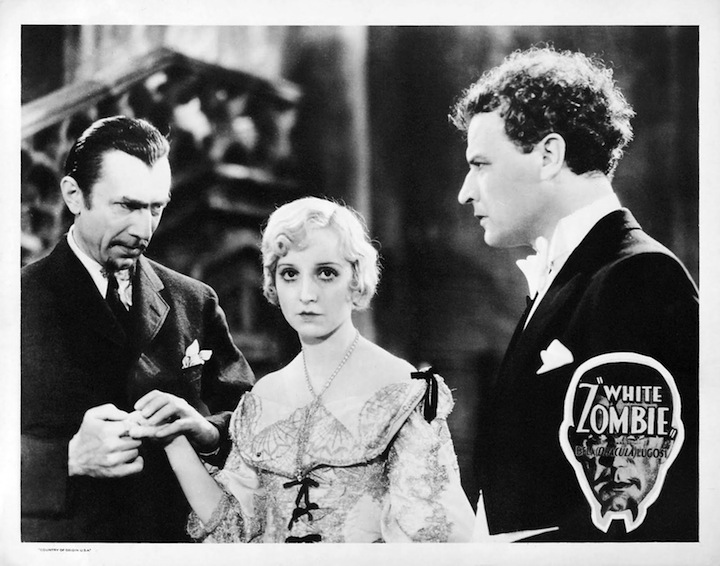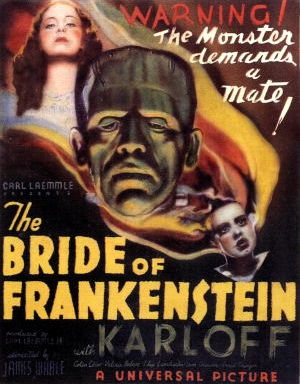By Lucas Hardwick
Contributing Writer
Welcome to Apes on Film! This column exists to scratch your retro-film-in-high-definition itch. We’ll be reviewing new releases of vintage cinema and television on disc of all genres, finding gems and letting you know the skinny on what to avoid. Here at Apes on Film, our aim is to uncover the best in retro film. As we dig for artifacts, we’ll do our best not to bury our reputation. What will we find out here? Our destiny.
 THE HUNCHBACK OF NOTRE DAME – 1923
THE HUNCHBACK OF NOTRE DAME – 1923
4 out of 5 Bananas
Starring: Lon Chaney, Patsy Ruth Miller, Norman Kerry, Branson Hurst, Ernest Torrence
Director: Wallace Worsley
Rated: Unrated
Studio: Eureka Entertainment
Region: 2K Blu-Ray: Region B – UK & Ireland
BRD Release Date: October 17, 2022
Audio Formats: English 2.0 DTS-HDMA. Silent with musical score
Video Codec: MPEG-4 AVC
Resolution: 1080p
Aspect Ratio: 1.33:1
Run Time: 100 minutes
CLICK HERE TO ORDER
Who doesn’t love a good underdog story? And what’s a good underdog story without a little bullying? In most cases, the misfit with the outlying idiosyncrasy is picked on by some equivalent of the captain of the football team, and by the end of the film, the narrative takes a turn, and the hardscrabble hero emerges victorious. You can see it coming a mile a way, but the comeback story is always entertaining because we love to see “losers” win. What does that say about us? Whether they’re a weirdo, an eccentric, a screwball, or a maverick, we somehow relate to the struggles of the odd person out.
“losers” win. What does that say about us? Whether they’re a weirdo, an eccentric, a screwball, or a maverick, we somehow relate to the struggles of the odd person out.
The thrill of the underdog narrative has been a staple of storytelling since the beginning of time — see also, the Gospels. It’s hard to pin down when and where this brand of entertainment began at large, but it’d be easy to assume Victor Hugo’s 1831 novel Notre Dame de Paris was one of the earliest. Better known as The Hunchback of Notre Dame, Hugo’s novel originally focused on an array of characters around the famous church, but over time became the more specific story of the deformed cathedral bellringer and his rise to tragic heroism.
Universal Picture’s 1923 film wasn’t the first motion picture adaptation of The Hunchback of Notre Dame, but it was the first time a film featured Quasimodo (Lon Chaney) as the main character. Despite actor Lon Chaney’s passion and involvement in the making of the feature, the character of the Hunchback still seems to have to fight for top billing amongst a long list of cast members. At its heart, this version The Hunchback of Notre Dame is Esmeralda’s story.
 With more plot than you can shake a stick at, Universal’s THE HUNCHBACK OF NOTRE DAME is the outrageous story of a Romani woman being kidnapped several times by various scheming and incompetent men. The basic premise is along the lines of a really juicy soap opera, falling just short of shocking resurrection (though this film nearly contains a parallel for it when a man thought dead, isn’t).
With more plot than you can shake a stick at, Universal’s THE HUNCHBACK OF NOTRE DAME is the outrageous story of a Romani woman being kidnapped several times by various scheming and incompetent men. The basic premise is along the lines of a really juicy soap opera, falling just short of shocking resurrection (though this film nearly contains a parallel for it when a man thought dead, isn’t).
The story bobs and weaves across a variety of kidnapping attempts behind motives that, aside from the good old fashioned cheating suitor, are never clearly explained. In the end, the only male in the film who performs as anything resembling a hero, is the hunchback bellringer Quasimodo when he rescues Esmeralda (Patsy Ruth Miller) and offers her sanctuary inside Notre Dame as a legion of vagrants mount an attack on the massive cathedral.
The motivation for Quasimodo’s compassion emerges from Esmeralda’s respect for him. She’s the one person who treats him with sympathy and kindness after he’s bullied and lashed before a crowd of people as he’s crowned King of the Fools. Quasimodo’s heroism comes as a refreshing take on the traditional rescue. His motives aren’t steeped in love, lust, or romance, much less any sort of bravado, but rather grounded in kindness.
THE HUNCHBACK OF NOTRE DAME premiered in the height of the silent film era. It’s excessive plot requires an amount of patience and attention. The prospect of watching a silent film these days is usually met with a degree of respectful apprehension. One must prepare for the event of watching a silent film. The idea that only music will be present to guide viewers through actually paying attention to the action as the occasional narrative insert moves the story along is an embarrassingly relatable assertion. That said, audiences will be relieved to know that the film clips along at a cracking pace. In fact, its convoluted narrative is almost too much for the mildly toilsome process of watching a silent film. So much happens in such a short amount of time that the story becomes a little confusing to follow, but the execution is a testament to the film’s efficiency.
pace. In fact, its convoluted narrative is almost too much for the mildly toilsome process of watching a silent film. So much happens in such a short amount of time that the story becomes a little confusing to follow, but the execution is a testament to the film’s efficiency.
Audiences will find any other silent film apprehensions swiftly abated upon the appearance of Lon Chaney’s Quasimodo and the enormous, lavish set pieces that dress the film. The Hunchback was a passion project of Chaney’s that he’d sought to get off the ground for several years. His performance as the cathedral chimera evokes a tangible grotesqueness that is as visually off-putting to the audience as it is to the people who seek to abuse him for his deformities. Chaney additionally applied his own makeup and likely acted as director for much of the film. Wallace Worsley is credited as director but only after Chaney’s original choice, Erich von Stroheim, was fired by Universal chief Irving Thalberg before production even started. Some have suggested that Worsley was merely a craftsman who managed production while Chaney directed the performances.
 THE HUNCHBACK OF NOTRE DAME is presented in high-definition on Blu-ray Disc from Eureka Entertainment’s Masters of Cinema imprint. The disc boasts a 4K restoration of a 16mm print, a haunting score by Nora Kroll-Rosenbaum and Laura Karpman, and a new audio commentary by author and critic Kim Newman and author Stephen Jones. Two new featurettes with Newman and film historian Jonathan Rigby provide a wealth of insight into the history of The Hunchback on film as well as Universal’s 1923 production.
THE HUNCHBACK OF NOTRE DAME is presented in high-definition on Blu-ray Disc from Eureka Entertainment’s Masters of Cinema imprint. The disc boasts a 4K restoration of a 16mm print, a haunting score by Nora Kroll-Rosenbaum and Laura Karpman, and a new audio commentary by author and critic Kim Newman and author Stephen Jones. Two new featurettes with Newman and film historian Jonathan Rigby provide a wealth of insight into the history of The Hunchback on film as well as Universal’s 1923 production.
The role of the underdog is a thankless one. In the case of Quasimodo, it’s quite tragic. And in what is otherwise a pretty kooky plot, THE HUNCHBACK OF NOTRE DAME not only appeals to our need to see the bullies get what’s coming to them, but doubly satisfies with terrific spectacle and charismatic performances.
When he’s not working as a Sasquatch stand-in for sleazy European films, Lucas Hardwick spends time writing film essays and reviews for We Belong Dead and Screem magazines. Lucas also enjoys writing horror shorts and has earned Quarterfinalist status in the Killer Shorts and HorrOrigins screenwriting contests. You can find Lucas’ shorts on Coverfly.
Ape caricature art by Richard Smith.














